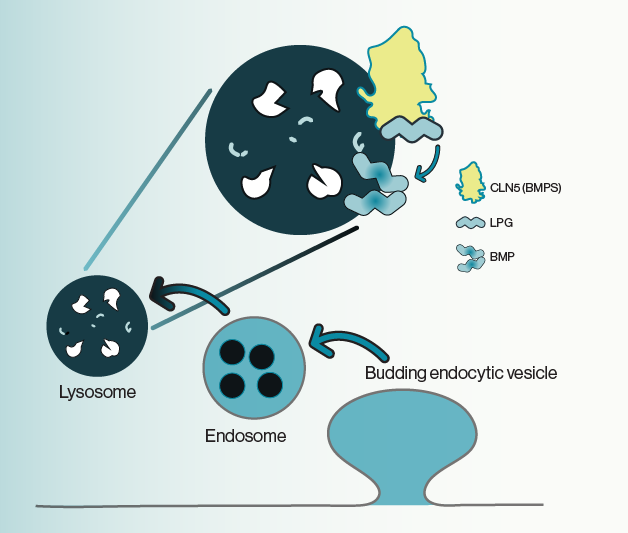Bis(monoacylglycero)phosphate (BMP), also known as LBPA, is necessary for lysosomal function and alterations in BMP levels have been observed in several human diseases. However, the enzyme responsible for synthesis of BMP has long been a mystery. In this study, researchers from Stanford University identify CLN5 as the enzyme responsible for BMP synthesis, e.g. BMP synthase (BMPS). CLN5 is one of a group of proteins implicated in a subset of neurodegenerative diseases characterized by lysosomal storage disorders that are referred to as neuronal ceroid lipofuscinosis (NCL), or more commonly Batten disease.
Using a combination of cellular lipid analysis and in vitro protein activity assays, the authors show that loss of BMPS leads to accumulation of lysophosphatidylglycerol (LPG), the lipid precursor to BMP. Echelon’s Glycerophosphoinositol (GPI) (P-0000) was used in these studies. BMPS deficiency also led to loss of BMP species and disruption of downstream lipid metabolism. Curiously, the current data show that BMP synthesis occurs on vesicles within the lysosome itself. This is notable as the lysosome is typically thought of as a catabolic environment for cellular materials where synthesis of new molecules would not be expected to occur.

Even with this crucial step forward in understanding disease-associated lipid biology, other questions remain open. Lysosomes are not known to contain substantial amounts of the lipid substrates needed for BMP synthesis, thus it is unclear what the cellular source for these precursors is. The authors speculate that mitochondria, which are enriched for phosphatidylglycerol (PG) species, may serve as a source for these lipids, but this would require unique forms of exchange between these organelles that are as yet undefined. It is also unclear why loss of BMPS activity appears to only result in nervous system pathology. However, BMP deficiencies are also observed with other Batten disease genes. This implies that these genes converge on lipid metabolism within the lysosome and that neuronal cells may be especially susceptible to lysosomal disruptions.
Beyond neurodegeneration, BMP has been linked to atherosclerosis, viral infections, and cancer. In this light, the identification of CLN5 as the BMP synthase creates new opportunities for studying lysosomal involvement in these diseases and disorders and opens the door to BMPS as a novel therapeutic target.
Read the full article here:
The Batten disease gene product CLN5 is the lysosomal bis(monoacylglycero)phosphate synthase
Science 381, 1182–1189 (2023)
